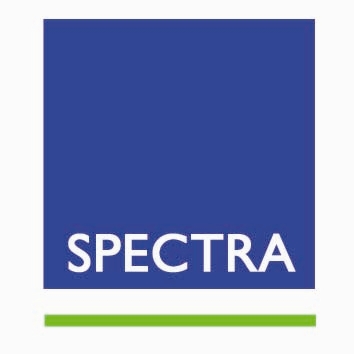training ward ambulance replica custom built for A&E at salisbury college
We were tasked with providing a critical component for the new state-of-the-art A&E training ward at Salisbury College. The training ward is designed to replicate a modern A&E ward, offering trainee doctors, nurses and other healthcare professionals the opportunity to practice in a realistic, high-pressure environment before they enter real-life emergency scenarios.
Our role was to create a realistic first stage of the A&E process, simulating the arrival of a patient being brought into the A&E reception from an ambulance, just as it would happen in real life. To make this happen, Spectra delivered a custom-built ambulance replica that could be used to mimic this exact scenario.
Challenges of the Project
Several unique challenges came with this project, which required careful planning and problem-solving:
Location constraints: The A&E training area was located on the first floor of the college, accessible only through narrow stairwells or a small lift. This made transporting and installing the ambulance replica a logistical challenge.
Tight timeline: The project had to be completed within a limited timeframe, between the departure of construction workers and the return of students after the summer break.
Budget restrictions: The project had to meet budget constraints while maintaining a high level of realism to provide the best training experience.
Realism and accuracy: Achieving a completely authentic training experience was paramount, with every aspect of the ambulance needing to replicate the equipment and layout of a real emergency vehicle.
The Solution
After extensive research, we identified a decommissioned ambulance that matched the Wiltshire Ambulance Service’s specifications, ensuring continuity and realism. This was no easy task, as different types of ambulances are used throughout the UK but we located the correct vehicle through an auction house in Merthyr Tydfil, Wales.
The Fabrication Process
The process of converting the ambulance into a training tool involved careful disassembly and modification to fit the spatial restrictions of the college’s first-floor training area. The steps included:
Evaluation and planning: Detailed assessments were made of the college site to understand weight restrictions and other logistical considerations.
Removing unnecessary components: The ambulance’s base chassis, interior, electrical systems and other non-essential equipment were removed to reduce weight and allow for easier transport.
Modularising the vehicle: The ambulance was cut into smaller sections to make it easier to transport and reassemble on-site. The body was split into horizontal panels and an aluminium modular base frame was fabricated to support the structure.
Interior and Exterior Modifications
Once the body was prepared, we focused on restoring and modifying the ambulance’s interior to match the standards required for realistic training:
The stretcher lift, hydraulic systems and emergency lighting were re-commissioned.
Modifications to the exterior included a full wrap to replicate the look of an operational ambulance.
The interior was refitted, including all lighting, flooring and other necessary features to match real-life ambulance specifications.
Once everything was completed, the ambulance replica was disassembled, carefully packaged and transported to Salisbury College for reassembly.
Final Assembly and Testing
After arriving at the college, our team worked on-site to reassemble the ambulance replica. This included the reinstallation of the stretcher lift and other vital components. After the rebuild, we conducted a full testing and commissioning procedure to ensure that everything was functioning correctly and ready for use in the training ward.
A Realistic Training Experience for Future Healthcare Professionals
This project was a key component of the A&E training ward, providing an authentic, hands-on experience for trainee healthcare professionals. By simulating a real emergency scenario (right down to the arrival of the patient by ambulance) this replica will help future doctors, nurses and medical staff prepare for real-life situations in the emergency department.
At Spectra, we’re proud to have been part of this innovative project, helping to create a training facility that will support and develop the skills of healthcare professionals for years to come.
